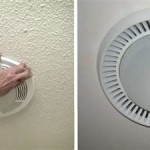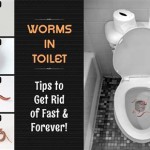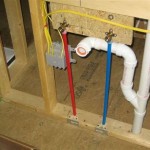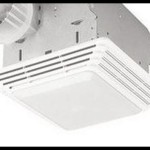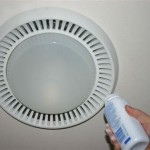What Are The Small Flying Bugs In Your Bathroom?
Finding small flying insects in a bathroom is a common household issue. These unwelcome guests can be annoying and can even indicate underlying problems within the plumbing or structural integrity of the bathroom itself. Identifying the type of insect is crucial for determining the correct approach for eradication and prevention. While several different species could be responsible, understanding their characteristics and preferred habitats is the first step toward reclaiming the bathroom space.
Several factors contribute to the presence of these bugs. Moisture, standing water, and organic debris all provide ideal breeding grounds for many varieties. Unsealed cracks in tiles, leaky pipes, and overflowing drains can create the damp environments these insects thrive in. Additionally, poor ventilation can exacerbate the problem by trapping moisture and creating a consistently humid environment. Recognizing these contributing elements is critical for developing a comprehensive strategy to eliminate the bugs and prevent their recurrence.
This article will explore some of the most common small flying insects found in bathrooms, discuss the factors that attract them, and provide guidance on how to address and prevent future infestations. Knowing the specific pest and its habits will empower effective solutions to maintain a clean and bug-free bathroom.
Identifying Common Culprits: Drain Flies
Drain flies, also known as moth flies or filter flies, are among the most frequently encountered small flying insects in bathrooms. They are easily recognizable by their small size (typically 1/8 to 1/5 inch long), dark color (often gray or black), and fuzzy, moth-like appearance. These flies have rounded wings that they hold over their bodies when at rest, further contributing to their moth-like resemblance. The presence of numerous fuzzy hairs all over their body helps to further differentiate them from other small flies.
Drain flies get their name from their preferred breeding grounds, which are organic matter buildup within drains, drainpipes, and sewers. They are attracted to the stagnant water and decaying organic material found in these environments. Their larvae feed on this organic matter, contributing to the breakdown of sewage and other waste materials. While that might seem beneficial, their presence in homes is far from desirable.
The life cycle of a drain fly is relatively quick, with eggs hatching into larvae in as little as 24 to 48 hours. The larvae then feed and mature within the organic slime layer inside drains. The pupal stage follows, and eventually, adult flies emerge. The entire life cycle can be completed in as little as a week under ideal conditions, leading to rapid population growth. This rapid reproduction rate makes addressing drain fly infestations promptly very important.
To eliminate drain flies, targeting their breeding sites is essential. Simply killing the adult flies will only provide a temporary solution, as new flies will quickly emerge to replace them. Effective control measures include thoroughly cleaning drains with a stiff brush to remove organic buildup. Biological drain cleaners, which contain enzymes or bacteria that break down organic matter, can also be used. In severe cases, a plumber may be needed to inspect and clean drainpipes more thoroughly. Prevention involves regularly cleaning drains and ensuring proper drainage to prevent the accumulation of stagnant water and organic debris.
Pinpointing Phantoms: Fruit Flies
Fruit flies, also called vinegar flies, are another common type of small flying insect often found in bathrooms, although their presence is less directly linked to the drains like drain flies. These flies are typically smaller than drain flies, measuring about 1/10 to 1/8 inch long. They are generally brown or tan in color and have characteristic red eyes, although varieties with black eyes exist.
While fruit flies are commonly associated with overripe fruit in kitchens, they can also be attracted to bathrooms by other sources of fermenting organic matter. These sources can include small spills of sugary substances like shampoo or soap, moist areas under sinks where organic matter might accumulate, or even damp towels and washcloths left lying around. Fruit flies are highly attracted to the smell of fermentation, and these seemingly insignificant sources can be enough to attract them.
Female fruit flies lay their eggs near or on the surface of fermenting food or other organic matter. The larvae hatch and feed on the decaying material. The life cycle of a fruit fly is very rapid, taking only about a week to complete under optimal conditions. This allows fruit fly populations to increase very quickly when a food source is available.
Eliminating fruit flies requires identifying and eliminating their breeding sources. Thoroughly cleaning the bathroom, paying close attention to spills, damp areas, and forgotten bottles of toiletries, is crucial. Properly storing and disposing of any potential food sources, such as discarded cotton swabs or used tissues, can also help. Traps baited with apple cider vinegar or other sweet liquids can be used to capture and kill adult flies. These traps should be placed near areas where the flies are frequently seen.
Gnats and Other Tiny Troublemakers
In addition to drain flies and fruit flies, other species of small flying insects can occasionally be found in bathrooms. Gnats, for instance, are a general term referring to many species of small, two-winged flies, often characterized by their tendency to swarm and bite. While some gnats breed in soil or vegetation outdoors, others can find their way into bathrooms through open windows, cracks, or other openings.
Fungus gnats, in particular, are often mistaken for fruit flies. These tiny, dark-colored flies are attracted to damp soil and decaying organic matter, which can sometimes be found in potted plants kept in the bathroom. Overwatering plants and allowing leaf litter to accumulate on the soil surface can create ideal breeding conditions for fungus gnats. If the bathroom has plants, inspecting them for signs of infestation is crucial.
Phorid flies, another group of small flies, are also sometimes found in bathrooms. These flies, also known as humpbacked flies, are attracted to decaying organic matter and can breed in drains, garbage disposals, or even under leaky pipes. They are named for their characteristic humped back appearance. Their presence can indicate a more serious problem with plumbing or sanitation.
Controlling these less common types of small flying insects often requires a more targeted approach. Identifying the specific species is the first step. For fungus gnats, allowing the soil in potted plants to dry out between waterings and removing any dead leaves can help to eliminate their breeding grounds. For phorid flies, thoroughly inspecting and repairing any leaky pipes or plumbing fixtures is essential. Sealing cracks and other entry points into the bathroom can also help to prevent these and other insects from entering the space.
Prevention and Long-Term Control
Once the small flying bugs are eliminated from the bathroom, preventing their return is crucial. Implementing several preventive measures can help to maintain a bug-free environment and avoid future infestations. These measures address the conditions that attract and support these insects.
Maintaining a clean and dry bathroom is paramount. Regularly cleaning sinks, showers, and toilets to remove organic residue and prevent the buildup of slime or mold is essential. Wiping up spills promptly can eliminate potential food sources for fruit flies and other insects. It is also advised to regularly clean and disinfect drains to prevent drain fly infestations.
Proper ventilation is also vital for preventing small flying insect infestations. Good airflow helps to reduce humidity levels, making the bathroom less attractive to these pests. Opening windows or using a ventilation fan after showering or bathing can help to dry out the space and prevent the accumulation of moisture. Repairing any leaky pipes or faucets is also crucial for preventing standing water and reducing humidity.
Sealing cracks and openings in the bathroom can help to prevent insects from entering the space. Caulking around sinks, toilets, and bathtubs can block entry points for insects. Ensuring that windows and screens are in good repair can also help to keep bugs out.
Regular inspection and maintenance can help to identify and address potential problems before they lead to infestations. Checking drains and plumbing regularly for leaks or blockages can help to prevent drain fly and phorid fly problems. Monitoring potted plants for signs of fungus gnats and adjusting watering practices accordingly can also help to prevent infestations. By taking these proactive steps, it is possible to keep the bathroom free of unwanted guests and maintain a healthy, pest-free environment.

How To Get Rid Of Drain Flies Moth And Prevent An Infestation Pest Defence

5 Easy Ways To Get Rid Of Drain Flies Fast

What Are Those Little Dark Colored Flies That Come Out Of My Bathroom Sink Uf Ifas Entomology And Nematology Department
Jab Plumbing Solutions Blog Blocked Drain Plumbers

How To Get Rid Of Drain Flies 5 Easy Ways Vinx Pest Control

How To Get Rid Of Drain Flies Moth And Prevent An Infestation Pest Defence

How To Get Rid Of Drain Flies 6 Easy Steps

Drain Fly Facts What Causes Them How To Identify More

How To Get Rid Of Drain Flies

How Sydney S Weather Is Creating An Influx Of Drain Flies
Related Posts
